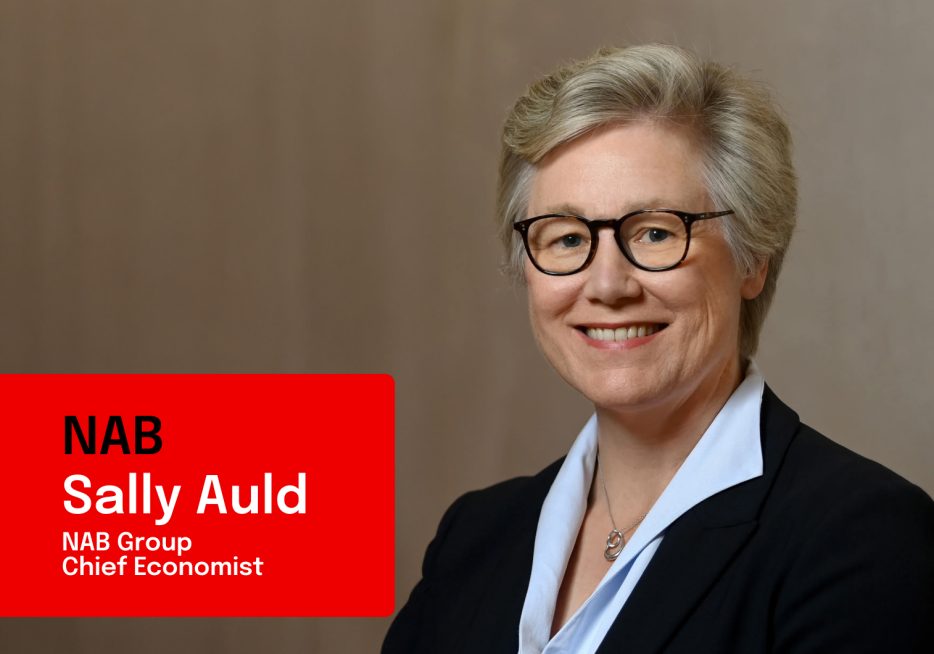We hear from NAB Group Chief Economist, as she shares her latest economic update. Watch now.


Launched 40 years ago, the now iconic Australian soft serve ice-cream brand Frosty Boy has grown to become a leader in the frozen dessert and beverage market both locally and overseas with exports to 48 countries.
Since launching in 1976, Frosty Boy has become an Australia icon and a leader in the local and overseas frozen dessert and beverage market. Now exporting to 48 countries, overseas sales account for 75 per cent of its turnover. The international push has been spearheaded by CEO Dirk Pretorius who was given the remit to take the brand global when he stepped into the top job in 2001.
It was the sweet taste of childhood for many Aussies who are now ‘in their prime’, but home grown soft serve icon Frosty Boy hasn’t been content to slide gently into nostalgia brand status.
Launched in 1976, the Queensland manufacturer is 40 years old and holding its own against the range of competing brands that have entered the market since ice-cream began morphing from a childish treat into upmarket indulgence two decades ago.
Today Frosty Boy’s product range includes powder-based mixes for soft serve ice-cream, yoghurt smoothies and blended drinks such as frappes, iced coffees and chocolates, spiced chai and hot chocolate. Its customers include cafes, convenience stores and quick service restaurants.
An undersung export success story, the company’s products are sold in 48 countries and overseas sales account for 75 per cent of its turnover.
Frosty Boy’s international push has been spearheaded by long-time Chief Executive Officer Dirk Pretorius, an experienced South African dairy industry executive, who was given the remit to take the brand global when he stepped into the top job in 2001.
Making that happen has been a highlight of his tenure. Pretorius is quick to share the credit with the team that’s stood behind him – from the company’s shareholders down to staff on the production floor.
“Our research and development team, marketing, operations, production, administration … there’s been extraordinary enthusiasm for our products and the company’s future, and that’s what’s helped us to make the transition from Australian household name to an internationally recognised supplier,” Pretorius says.
A well-defined expansion strategy, coupled with streamlined operational processes, has been the key to achieving – and exceeding – the 15 per cent year on year growth target set by Pretorius when he took the reins.
“It’s important to have a clear goal, however ambitious, that you aim for with great determination,” he says. “That, and our focus on elevating our profile in the world market, is what’s pushed us ahead.”
Offering customers a flexible array of options has helped the business break into new markets and fend off competitors in existing ones.
Frosty Boy’s in-house research and development team has overseen the expansion of its product range and the company currently has over 180 recipes in production.
Standout successes in recent years have included The Art of Blend, a base for hot and cold specialty drinks, aimed at QSR businesses.
“We saw a lot of customers across the international quick service restaurant industry excited about turning these bases into their own gourmet beverages to help them stand out from their competitors,” Pretorius says.
He believes the key to becoming a valued manufacturer and supplier is offering customers a solution, rather than a product.
“In many markets our powder-bases hold a great advantage over competitors’ liquid products – they’re easier to transport, more versatile and have a longer shelf life,” Pretorius says.
“It’s easy for customers to customise our products to transform them into a standout dessert or beverage on their menu. Adapting what we make and how we offer it has been integral to the company’s growth.”
Pretorius was part of a Brand Australia trade delegation to China earlier this year and is bullish about the company’s prospects in that country, given its well-documented love affair with Australian dairy-based products.
“China is a great market to be in, with plenty of growth opportunities,” he says.
“The Chinese market is willing to pay more for high-quality Australian product, such as our range of beverage bases. We’re already starting to see a substantial increase in the number of enquiries from China – I believe the China/Australia Free Trade Agreement that came into force at the end of last year may have instigated many of these. We’re hoping we can capitalise on these opportunities and establish some strong business partnerships.”
India and the Middle East – both markets where there’s a growing appetite for dairy-based treats – are also in Pretorius’ sights.
Increasing demand saw Frosty Boy outgrow its former factory in the outer Brisbane suburb of Loganholme two years ago.
The company subsequently relocated to a purpose built plant in Yatala, midway between Brisbane and the Gold Coast, in 2014.
Home to two production lines and an expanded research facility and laboratory, the facility covers an area of 6000 square metres.
“We chose the Gold Coast area as it provided us with access to skilled labour in a location that was accessible to local and international customers,” Pretorius says.
Manufacturing is computer controlled, and robotic technology is utilised to pack and wrap the equivalent of two million serves of soft serve ice cream each day; 60 per cent of the plant’s production capacity.
“We wanted a facility that would enable the business to double in size,” Pretorius says. “We’re in continuous growth mode, and it’s vital that we’re equipped with the infrastructure to allow this to happen.”
More from NAB:
© National Australia Bank Limited. ABN 12 004 044 937 AFSL and Australian Credit Licence 230686.